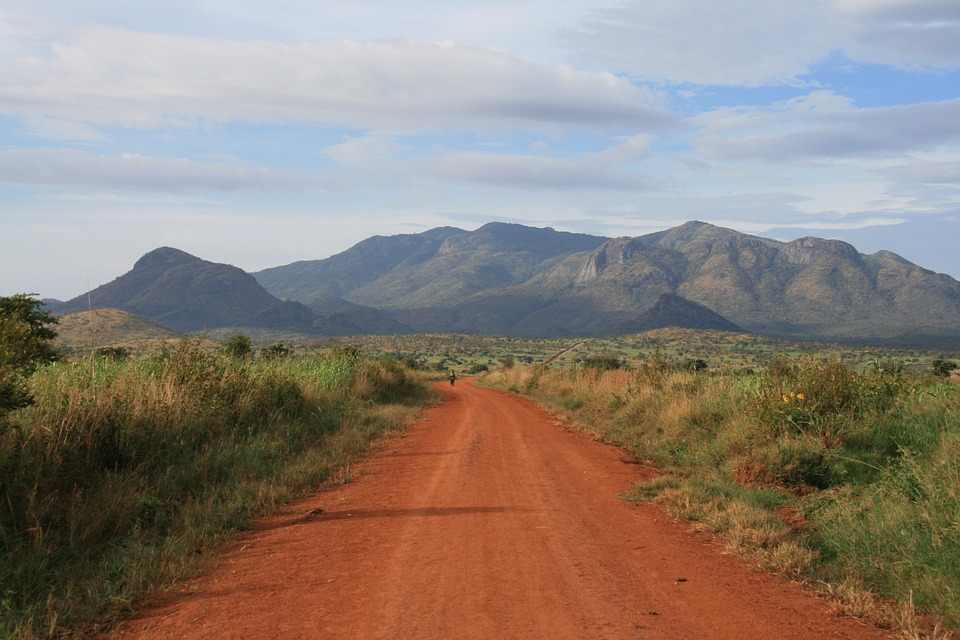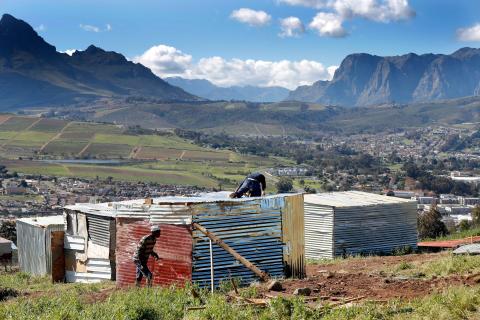Over the past few weeks, the Land Portal along with colleagues at Cadasta, have been hosting a three week online discussion (September 9-29) on the role of open land data in the fight against corruption. With over 100 contributions to the discussion and a variety of different perspectives, ranging from civil society to government representatives, we have received some valuable and thought-provoking content. One of the these contributions was from William Kambugu, ICT Officer at the Ministry of Lands, Housing and Urban Development, Government of Uganda. Speaking to fellow discussants about the Uganda Land Information System (UgNLIS) and its potential to support open land data access, we decided to delve further via a detailed interview.
Can you briefly introduce the Uganda National Land Information System (UgNLIS)?
A National Land Information System is a geographic information system for cadastral , land registration, physical planning, valuation and land administration typically used by governments. In Uganda, between 27%-20% of land is registered and the goal of the Uganda National Land Information System is to increase the land tenure security supporting the optimal use of Uganda’s land and land-based resources for a prosperous, industrialised and developed service sector economy. The implementation of a land information system provides easier access to land information and services, leading to a decreasing number of land related disputes, reduces the risks of fraud or bribes, secure land for both local administrations and beneficiaries and encourages investments.
Among other things, the Uganda National Land Information System will provide a set of technical processes and procedures for the registration of rights and interests in real estate units in Uganda. It will simplify and automate the procedures for land and real estate transactions. The Uganda National Land Information System was developed from the perspective of open source and interoperability. We want to open up access to land data and land information at sub-country level. We are currently capturing customary tenure data, together with UN-Habitat, GIZ, ZOA and other partners.
Who are the different users of UgNLIS? Do government, individual and civil society users interact with it differently?
Naturally the users are staff at the Ministries, Departments and Agencies are going to be prominent users of the system, such as government valuers, registrars of titles, physical planners, surveyors, support staff (technical and non-technical), the Land Commission and the District Land Boards. However, the users of UgNLIS are not limited to the government. Furthermore, (private) land surveyors and cartographers, banks, lawyers and corporate bodies are envisioned users of the UgNLIS. Perhaps most noticeably, the general public can also track transactions and there are physical local government offices that they can visit. There are currently 22 of such local government offices around the country.
Why is it important that UgNLIS is an interoperable system and what were the challenges in adopting an interoperable approach?
The UgGLIS is interoperable within the different departments of the Ugandan government. These different departments provide essential land-based services and use their own systems to provide their own service. The fact that UgNLIS is interoperable means that the data can be used in all the systems that are key in providing services. This means that the same data can be exchanged and used between the different departments of both state and local government.
While for the moment, this does not go outside government, we are exploring whether this can be expanded to having interoperability with banks.
In addition to a system to record land transactions and increase efficiency within government, is UgNLIS considered as an anti-corruption tool?
The UnGLIS is based on accountability and transparency and has been since its inception. Of course, transparency indirectly fights corruption. We are trying to use technology to bring about awareness on peoples’ rights, so we would indeed consider it as an anti-corruption tool.
The more we are able to improve on the tools, the more we can close the information gaps and level the playing field: everyone will have the same information. Furthermore, the more we can follow transactions from stage to stage, the more we can track the whole process of land markets and make this transparent to everyone. This is how corruption is fought.
While there can be possible misuse, it can work as long as this is controlled in terms of who has access, how and to what details. There needs to be a clear set of processes and standards, which is what we are in the process of developing.
In the process of providing more open access to land data, are there any legal barriers you encounter and if so, how do you address these barriers?
Indeed, while we want to provide more access to land data, there are legal barriers we deal with. Our legal framework does not necessarily support land instruments. Laws that are particularly relevant are the Electronic Transaction Act 2011, which is currently being amended, and the Data Privacy Act, for example. These laws should support the provision of online land data and information, and support the online transaction in the land registry. We need to sit down and analyze it to understand its meaning for the land transaction data we intend to publish.
You can publish a land parcel, but we should not publish the name of the owner of this parcel. We will publish unique identifiers and when someone wants more detailed information, such as who the owner is, they would have to request this at a Government office for a fee. That way, we insure the privacy of land owners and create revenue for the Government at the same time. Similar practices are applied in many other countries as well.
Our mission now is to ‘clean’ the data. We know what data we have and this data will be available at different levels. But what should be accessed, at what level and by whom? These decisions are pending while we are cleansing the data. We are structuring the data and assigning different classes to certain data, for example “Class 1” will be Public Domain, “Class 2” will be shared limitedly and “Class 3” would be completely closed. This is a process we are currently dealing with and these decisions will have to be made.
This process has taken other countries several years to finalize, so we are aware that this will be a continuous process to ensure the system is up to date and the data remains reliable.
Another theme in our discussion has been around data generated by citizens and civil society, rather than the state - allowing groups to record information about unregistered land that might support future land claims, or avoid future disputes. Where do you see such data fitting into the landscape that UgNLIS is part of?
There is indeed a great untapped potential there. We are working to include customary tenure data in our systems and these initiatives could help us go a long way with this. But of course it is a challenge, because we will need these initiatives to follow certain standards and guidelines to make it possible to include in our systems. Each country can have a different set of guidelines, but the guidelines need to be followed in order for this data to be incorporated into national systems. For example, the mapping should follow the physical Planning and Land use for the selected areas.
We use the Land Administration Domain Model, standard for land administration data, which is interchangeable with data from the Social Tenure Domain Model, as the guideline for community-collected data. Those standards incorporate at “fit-for-purpose” methods to collect this data. For example, capturing land data may be very different in a rural area from the way it would be done in an urban area. There might be different methodologies applicable, and communities would need to follow these systems for the data to be harmonized and included in the UgNLIS. Furthermore, when we talk about fit for purpose, we can look at the customary tenure avenue and data that communities are collecting. If the land is rural, we are not capturing data in the same way as in urban areas, for example. Therefore we apply a different “fit-for-purpose” methodology depending on the area.
Is there more that international partners (private sector, donors, multi-laterals etc.) could do to promote and support open data approaches in land administration?
Absolutely, there is more that they can do. Guidelines, as we just mentioned, should be invoked and they should be followed. The aim is securing tenure and guidelines and standards to follow during the implementation of the project because at the end of the day, the data needs to be used. International partners can help a great deal with this.





